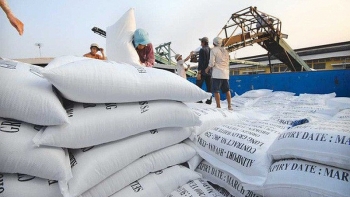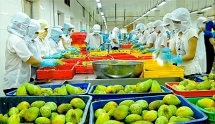Vietnam exerts itself to maximize exports during Q2
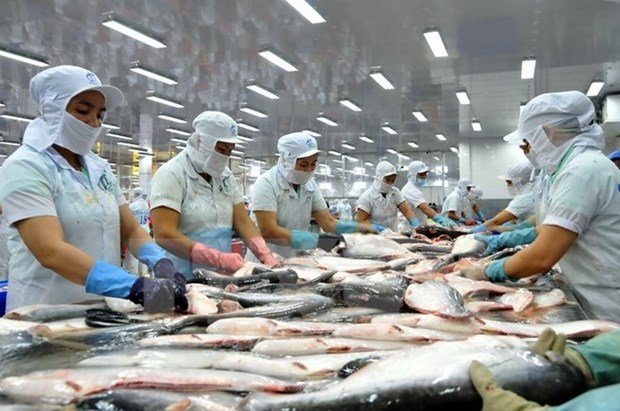 |
| Processing tra fish for exports (Photo: VNA) |
VOV informed that after the Vietnam Trade Office in Singapore connected with business associations in both the island nation and back at home to capitalise on opportunities to bolster Vietnamese exports. Some of their activities include the trade office purchasing Singaporean fruit and vegetable importers to the country in February as a means of finding fresh supply sources.
Moreover the office has been trying to keep local firms updated during the process of getting public procurement orders from the Singaporean government.
March alone saw the Vietnam Trade Office in Singapore win over 20 orders for different products such as coffee, instant noodles, sweet potatoes, cabbages, squash, eggplant, pineapples, watermelon, and dragon fruit, with approximately 500 tonnes of goods imported from Vietnam.
Domestic enterprises operating abroad are taking measures in order to focus more on trade promotion, seeking orders, and supporting local exporters.
According to the MoIT, the first quarter of 2020 saw the country's merchandise exports reach US$59.08 billion, up 0.5% in comparison to the 5.2% figure recorded during the same period last year - the lowest level of growth since 2003.
This drop in Vietnamese exports matches the general trend internationally and regionally. The opening three months of 2020 saw China’s export turnover fall by 17%, the RoK’s by 1.5%, Thailand’s by 0.8%, Japan’s by 4.1%, Hong Kong (China) by 12%, and Taiwan (China) by 6.3%.
Despite being greatly affected by the COVID-19 epidemic, the nation’s exports in the first quarter were maintained, giving the country extra leverage to rebound in plenty of key export markets when the epidemic is over.
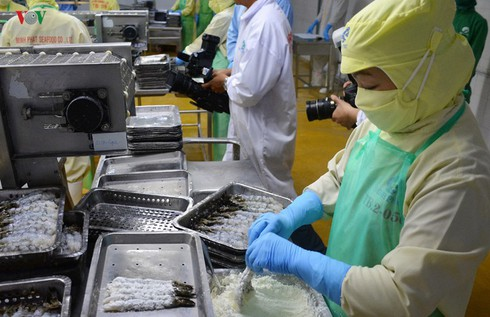 |
| Shrimp is one of Vietnam's key export products (Photo: VOV) |
Primary focus should be on neighbouring markets
With China beginning to get to grips with the COVID-19 epidemic, there are no longer restrictions on import and export activities involving the northern neighbour, therefore providing a good opportunity for the country to boost exports to the highly lucrative Chinese market in the near future.
According to a report released by the MoIT, the situation regarding the customs clearance of exports to China through northern border gates is undergoing gradual improvements.
“Although the Chinese side still face a shortage of workers for loading and unloading goods and the trucks have to undergo strict quarantine procedures, the speed of goods clearance in recent days has improved much more than in early March,” said Tran Thanh Hai, Deputy Director of Import and Export Department under the MoIT.
In addition to the improvements in trading condition with China, other major markets such as the RoK and Japan have also shown clear signs of recovery in March with the epidemic gradually being controlled in each of the respective countries. During the first three months of the year, Vietnam’s exports to the Chinese and Japanese markets surged by 11.5%, and 3.5%, respectively, despite the bleak macroeconomic picture.
Indeed, the country has sets its sights on boosting exports to markets that have the potential to bounce back quickly after the epidemic, such as China and the RoK.
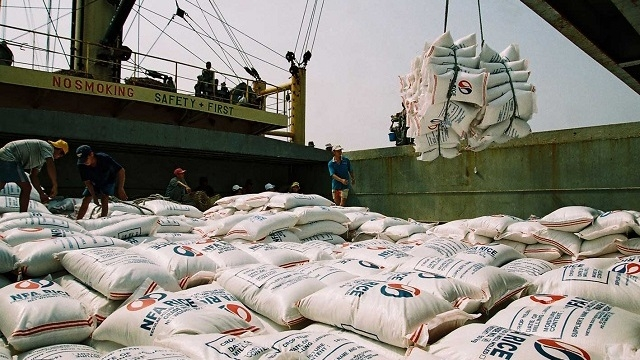 |
| Rice export (Photo: illustration) |
In terms of rice exports, the Vietnam Food Association stated the volume of rice exports in the first three months of the year reached over 1.4 million tonnes with a value of US$652 million, a 1.1% increase in volume and up 7.8% in value on-year.
Most notably, exports to China witnessed a dramatic upswing during the opening two months of the year, seeing rice exports to the Chinese market increase 595% in volume and 724% in value, reaching more than 66,000 tonnes with a value of US$37 million in the process.
Rice exports to China are carried out almost entirely in the form of an official quota due to export activities in the form of border exchanges stopping after the Lunar New Year.
In the three-month period, Vietnam exported 59.08 billion USD worth of goods, up 0.5 percent against the same period last year, but the lowest growth since 2003.
Over the past two years, China has moved to restrict imports through unofficial channels, such as small quota, and moved them to official channels, official quota. Therefore, Vietnamese businesses are gradually adapting themself to the new situation and are taking steps to transform themselves so they can trade in line with international practices.
As well as China, major markets like the Republic of Korea and Japan witnessed a recovery in March as the pandemic slowed.
In January-March, Vietnam’s exports to China and Japan posted year-on-year growth of 11.5 percent and 3.5 percent, respectively.
 | Vietnam suspends rice exports for food security Clearance for rice shipments has been stopped issuing by Vietnam Customs to ensure food security as the Covid-19 pandemic intensifies. |
 | Vietnam's shrimp exports remain firm in the coronavirus pandemic The domestic shrimp industry has not faced a great impact from the novel coronavirus disease. Many markets have reduced shrimp imports from China. That becomes ... |
 | Vietnam exports affected as EU close borders It is forecast that Vietnam's exports to the EU in the first and second quarter could reduce by 6-8%, according to the Ministry of Industry ... |
Recommended
 Economy
Economy

